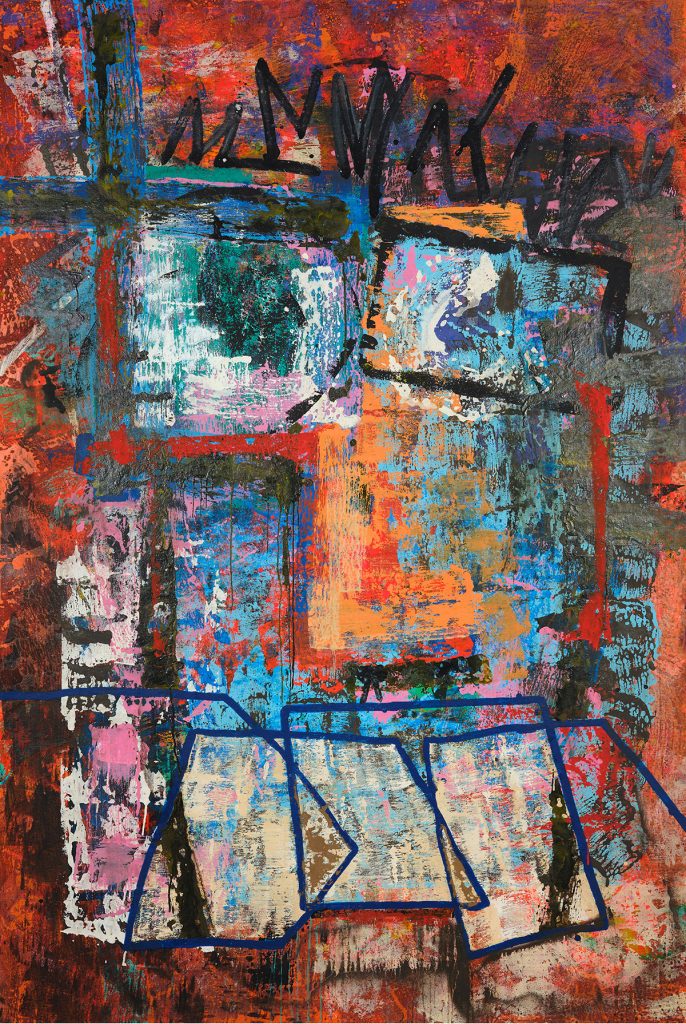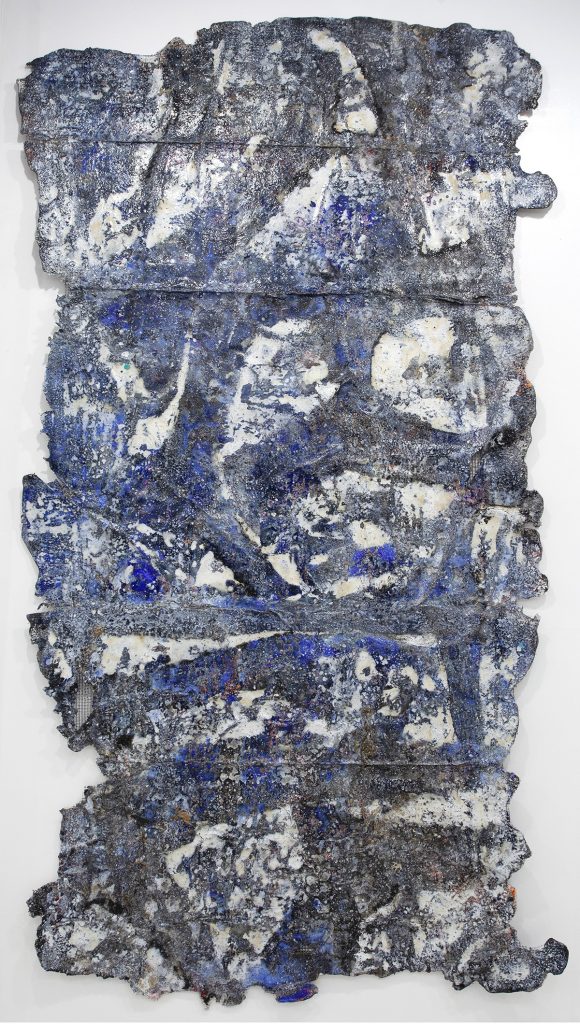by Siba Kumar Das

New York City is constantly pushing the world of art to reboot itself. To see how a young Korean-American artist is contributing to this ceaseless reinvention in a promising way, go to 69 Eldridge Street in Lower Manhattan and there, in a popup display space exemplifying cultural entrepreneurship, you will encounter sixteen paintings that will give you a memorable viewing experience.
Nurtured by the School of the Art Institute of Chicago and then by Brooklyn’s Pratt Institute, Jung Ho Lee is an artist drawn to multiple genres – sculpture, painting, collage, and photography. While sculpture initially dominated his professional life, he is now exploring a freedom that painting has opened up for him. From a practice where he found himself driven towards a fixed destination he has transitioned to a style where he is more impelled by process and the signals thrown up by his materials. This liberation has given us the paintings on show, from June 12-23, 2019, at the Eldridge Street exhibit, curated by Robert Curcio.
Jung Ho Lee has thought deeply about the course of Korean art and its crossover implications for American art. He is also trying hard to understand better the world he lives in. Doing so in a quotidian way, he applies to this challenge a sensibility enlivened by an omnivorous visual imagination. Going about his day-to-day life, he imports into his image bank scenes of decay, decline, and disorder. Allan Kaprow, a significant influence on Jung Ho Lee, saw in the everyday world “the most astonishing inspiration conceivable.” He said, “A walk down 14th Street is more amazing than any masterpiece of art.” Look now to the paintings Jung Ho Lee has spotlighted for us not far from 14th Street. Metamorphosed in them is entropy’s materiality sublimated into growth and renewal.
In Self-Portrait (2018) you discern many influences transformed into a veiled, allusive picture of this first-generation Korean-American artist possibly looking for an aesthetic or philosophical breakthrough. You see street art, Art Brut, Art Informel, and the art of Jean Dubuffet. You see color throwing off symbolic associations, just as it did for Vincent van Gogh when he gazed at Delacroix’s paintings. There are ideas derived from the Abstract Expressionists, especially Hans Hoffman and Willem de Kooning.

A very recent innovation of Jung Ho Lee’s is his use of plastic netting as a support in place of canvas and the application of a painted grid as a final layer. An example is Untitled D (2019), where you see a gray-black landscape lurking behind a blue-gray grid – the latter so shaped it seems to be an object extracted from the natural world, not a geometrical abstraction. You again think of Jean Dubuffet, especially his extraordinary landscapes. You see vestigial references to Asian landscape painting, a genre so universal and durable in its impact it is being reinvented in contemporary times. A similar remembrance was at work in the art of Nam Kwan, one of the first generation of twentieth-century Korean modernists. You see his influence in Untitled D.
Jung Ho Lee’s art represents an emerging episode in the encounter between Western and Eastern art. As for subject matter, his paintings express metaphorically the possibility of growth and renewal even as entropy remains insistent. At a time of political disorder and environmental decay, the Eldridge Street exhibit may be telling us that art can be an ecological force.
